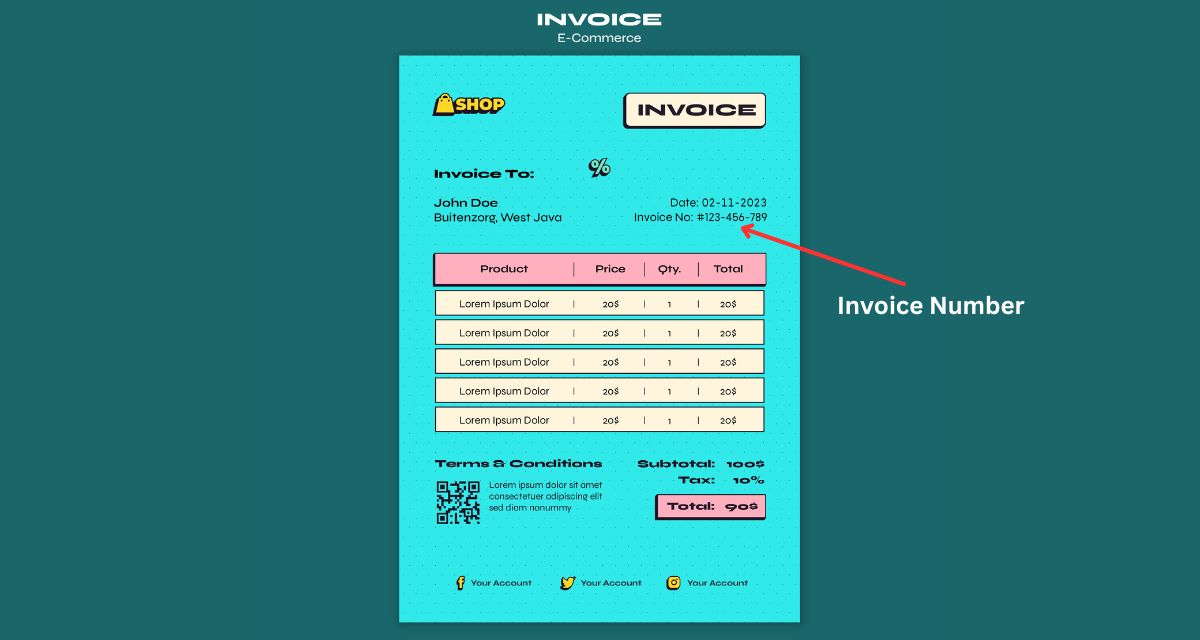If you run a small business or plan to start one, it is perfectly fine to juggle stuff, trying to fix things – product, marketing, sales, operations, and finance. Things that once seemed a mess will eventually return to normalcy when you have figured it all out. In the process, you deal with invoices every day. You would receive invoices for your expenses for making the product, marketing, sales, HR, etc. Also, you must decide on your billing and invoicing process. Invoices validate your product sale, serve as a legal document, and come in handy if there is a payment dispute. One aspect of an invoice that must be just right is the invoice number.
Every invoice has a unique identifier associated, and you would want to learn the invoice number best practices to ensure your billing process complies with the widely adopted and common practices that most people understand. This blog will discuss the meaning of invoice numbers, why they are needed, their benefits, and how to create one.
What is the Invoice Number?
An invoice number is a unique ID given to invoices to help identify, track, and manage them without confusion. As a business, you can decide on your invoice number format. You can use one of those invoice number generators to create one in a randomized or sequential format that suits your accounting process, but be mindful that it looks easy to read and remember.
Why is an invoice number so important?
Invoices can sometimes look similar without a unique identifier. You are likely to make mistakes. Imagine making blunders like swapping invoices and sending buyers the wrong invoices. So, it can certainly save you from silly mistakes and some big ones that can be costly.
What are the uses of an invoice number?
Well, it is the most essential detail of an invoice. You will find it useful for the following reasons and many more:
A legal document
No doubt, invoices serve as a legal document that verifies buy and sell orders. And an invoice number helps you identify them. It authenticates an invoice as it reads details of goods or serves delivery and amount owed.
Track payment
A buyer pays the seller for the product or services they receive against the invoice. The invoice number is the first thing the seller would locate in an invoice when juggling through documents to track payment as and when needed.
Track and settle overdue invoices
Searching through invoice numbers helps businesses quickly look for invoice statuses, whether pending, due, or overdue. It can thus save them from late fees and interest due to overdue.
Manage tax and accounting
Tax and accounting is an inevitable job for any business. It involves organizing and storing invoices so the accounting team can quickly find and refer to them for their tax and accounting needs. Invoice numbers make it easier for the accounting team to track and find necessary invoices and save them from last-minute hassle.
How to create invoice number – 5 easy ways
Five easy, standard yet best practices for creating invoice numbers are:
1. Sequential numbering
The easiest way is to go by serial incrementally numbering them, such as 1,2,3,4, and so on. However, consider adding as many zeros before the number so you don’t run out and have an invoice number crisis. For example, if you think you would be generating 9999 invoices, your first invoice number must read as 0001, the second 0002, and so on. However, if you think it can exceed 9999, make your first invoice number as 00001, second 00002, and so on.
2. Alpha-numeric
A combination of alphabets and numbers is one of the most common practices when trying to create a unique identifier. It is pretty easy to go about the number and straightforward. Number the first invoice as 01, second 02, third 03, and so on. However, be mindful of the alphabet. Random alphabets or a funky Gen Z code could be confusing. Consider something like INV01, INV02, or Invoice #01, Invoice #02, which makes sense and makes it easy to understand what the number and the letters tell about in the invoice.
3. Chronological
Deriving an invoice number based on the date it was created is another excellent idea. In that way, you add more to sequential numbering, making it unique yet easy to read and understand. For example, if you create your 10th invoice today, i.e., on 5th Jan 2025, your invoice number can be 05012025 – 10.
4. Project-based
Project-based invoice numbering is a common practice in service-based companies. In doing so, it is easier for the finance and accounting department to keep track of invoices issued based on the projects the team has worked on. For example, the first invoice sent after the delivery of Project X could read PROJX – 01, and that of Project Y could read PROJY-01.
5. Customer based numbering
An out-of-the-box approach would be to make it customer-specific. Although not widely used, it can add a personal touch to the invoice. Say you are sending an invoice to MR Sam. The invoice number could read CUSTOMER-SAM – 01.
Every minute aspect of an invoice is crucial as it validates a transaction. The first thing you look for in an invoice is the invoice number. It tells you whether or not you are looking at the correct invoice. Therefore, following the right format consistently throughout is crucial for a smooth invoicing and billing process.

Leave a Reply